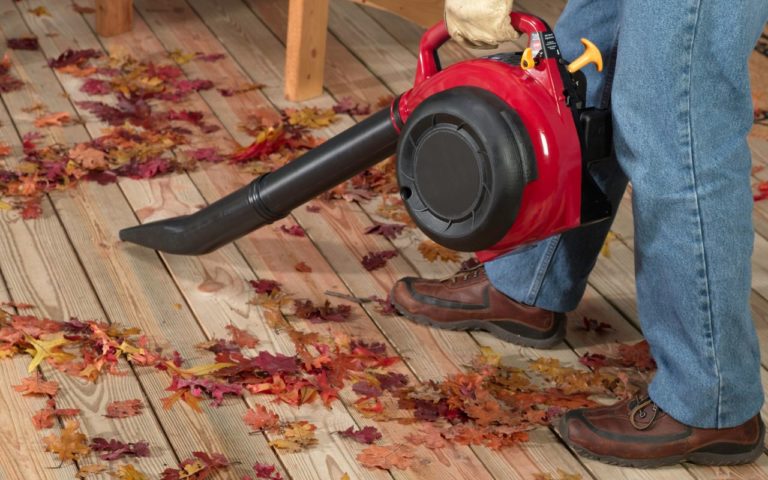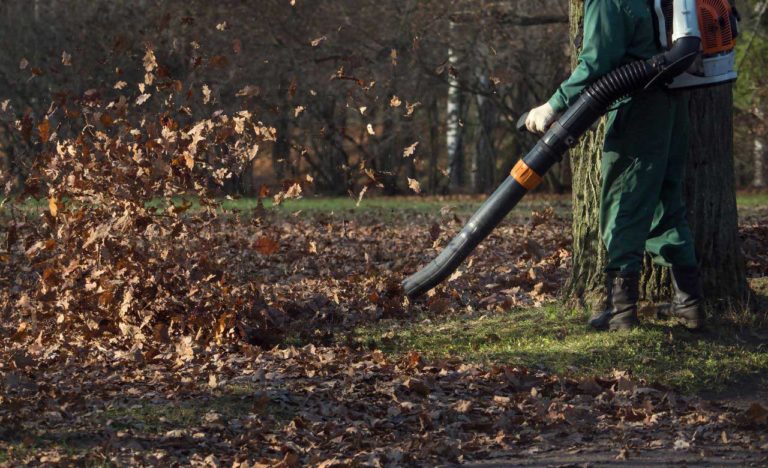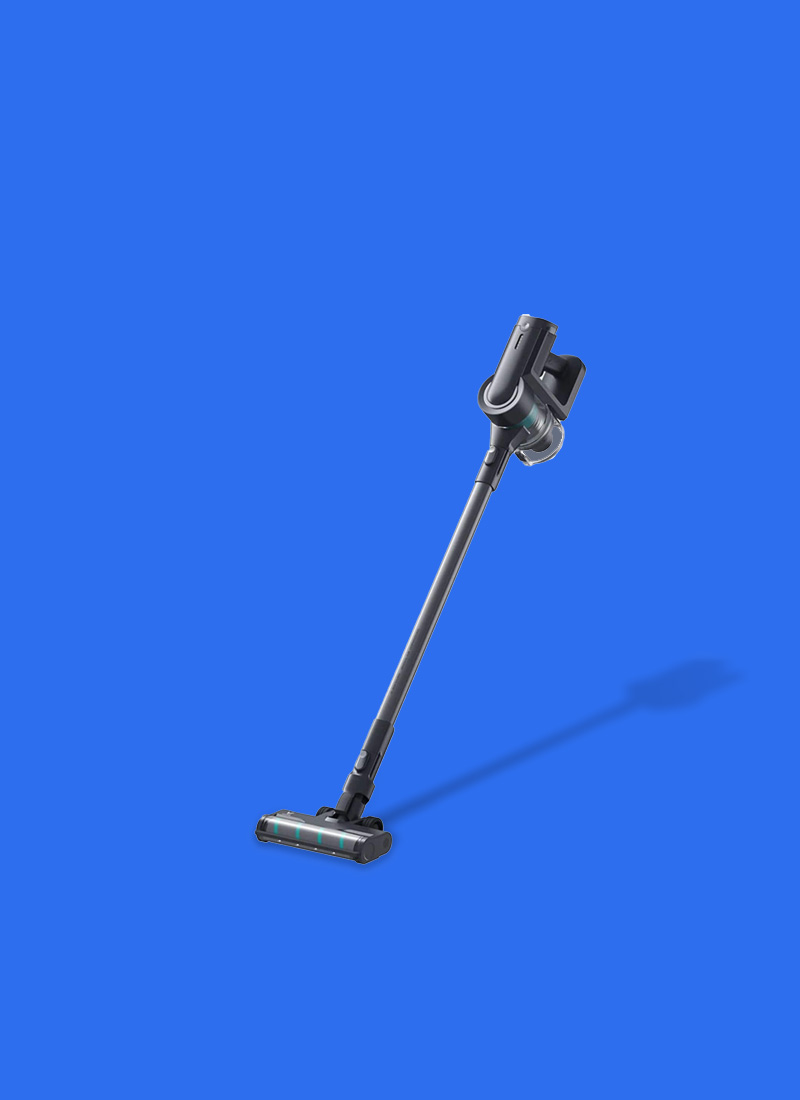ⓘ We are reader-supported and may earn a small commission at no additional cost to you if a purchase is made through one of our links.
Like all power tools, leaf blowers require maintenance for them to operate efficiently. That said, ensure that you check your leaf blower regularly to avoid problems during usage. A well-maintained leaf blower not only runs smoothly, but will also help you get the job done within the shortest time possible.
However, not all leaf blowers are similar when it comes to design and mode of operation. As such, maintenance practices may vary from one leaf blower to another. This article highlights simple tips that can help you keep your leaf blower in good working condition.
Tips for General Care and Maintenance of a Leaf Blower
Leaf blowers are, without a doubt, one of the most essential power tools. They can come in handy when handling a range of landscaping and gardening projects. Besides, leaf blowers are easy to use, making them ideal for everyone.
To come up with a good maintenance routine, you need to know the type of leaf blower that you have. There are two main types of leaf blowers that you can go for—gas-powered and electric.
Gas-powered leaf blowers feature gasoline engines that drive the fan blades at high speed, thereby generating the force needed to blow leaves and other debris. This type of leaf blower also has a fuel tank that has to be topped up from time to time.
Depending on your needs and budget, you can buy a 4-cycle or 2-cycle gas-powered leaf blower. Since gas-powered leaf blowers are made up of several components, they require more maintenance than their electric counterparts.
Electric leaf blowers, on the other hand, are equipped with electric motors that draw power from outlets or batteries. Taking care of an electric leaf blower is very easy, and that is one of the reasons why most people prefer them over gas-powered models.
The tips that we are going to cover in this section apply to both types of leaf blowers, so read through to learn more about how you can take care of a leaf blower.
Check the air filter
Leaf blowers are fitted with air filters to prevent the ingress of dust and other debris into the engine. With time, the air filter will become dirty, making it less efficient. By checking the air filter, you’ll be able to avoid common leaf blower problems.
Clean the leaf blower after use
To prolong the lifespan of your leaf blower, you need to clean the unit after each use. You should check if the air vents are clogged with debris, as this may cause the leaf blower to overheat when you are working.
The nozzle and the casing should also be cleaned to prevent the build-up of dirt. Only use mild soaps and water when wiping down your leaf blower. This way, the paint will stay in top-class condition for an extended period.
Check the blower chute and fan
When you are done using your leaf blower, ensure that you check if the fan blades are as they should be. You also need to inspect the blower chute for debris.
Proper storage
Some of the components on your leaf blower can easily get damaged if the unit is not stored properly. A leaf blower should be stored in a cool, dry place to prevent corrosion and other destructive forces from damaging the circuitry system.
For most people, the garage is the most ideal place to store a leaf blower. If you have a wall-mounted tool rack, you can easily attach the leaf blower to it. You should avoid areas with direct sunlight.
How to Maintain an Electric Leaf Blower
Electric leaf blowers require minimal maintenance, so they are more convenient compared to gas-powered units. If you are using a cordless model, be sure to check the condition of the battery regularly.
In addition to this, all the terminals should be thoroughly cleaned to keep the battery in good condition. Try as much as you can to minimise the charging time to avoid degrading the battery. You can do this by unplugging the battery immediately after it reaches its full charging capacity.
For corded leaf blowers, ensure that you inspect the power cable before each use. If the cord is damaged, you should consider replacing it. You can also untangle the cable if it has knots.
The extension cord should always be detached from the leaf blower before storage. Lastly, tighten any loose fasteners to ensure the unit stays in one piece when cleaning your yard.
How to Maintain a Gas-powered Leaf Blower
As stated earlier, gas-powered leaf blowers are made up of many components, all of which will require maintenance at one point. To make your work easier when working with a gas-powered leaf blower, you should familiarise yourself with the most important parts.
Here are the quick tips that can help you get started:
Check the spark plug
The spark plug is an essential component of all gas-powered units, including leaf blowers. As the name implies, it emits sparks that aid in the ignition of fuel in the engine. If the spark plug is in a bad condition, your leaf blower won’t start up.
You can use a spark tester to check if the spark plug on your unit is working. Also, the spark plug should be replaced as directed by the manufacturer or depending on the frequency of use.
Clean the carburettor
The carburettor is just as important as the spark plug. It ensures the engine is supplied with enough air and fuel for maximum combustion. A clogged carb will prevent the combustion chamber from getting the right amount of fuel and air.
As a result, you’ll have a hard time starting your leaf blower. Experts recommend that you use a carburettor cleaner when cleaning this component.
Check the fuel line
Ensure that the hose/tube connecting the fuel tank to the engine system is not leaking. This should be done before and after using the leaf blower.
Replace the fuel filter
The fuel filter safeguards the engine against dirt and other particles that may be in the fuel that you are using. Regular replacement of the filter allows fuel to flow smoothly to the engine’s fuel injection system without clogging the unit.
Change the oil
If you are using a 4-cycle gas-powered leaf blower, you need to change the oil regularly. It is recommended that you do this after thirty to fifty hours of use. 2 stroke leaf blowers don’t require oil change because the oil is mixed with the fuel at a specified ratio.
Conclusion
With proper care and maintenance, your leaf blower will not only run smoothly, but will also provide you with long-lasting service. As discussed, electric leaf blowers are easier to maintain than gasoline leaf blowers, so you are the one to choose the type that works best for you. If you are not sure how to go about some of the points that we have discussed above, you should consider hiring a professional to help you out.




